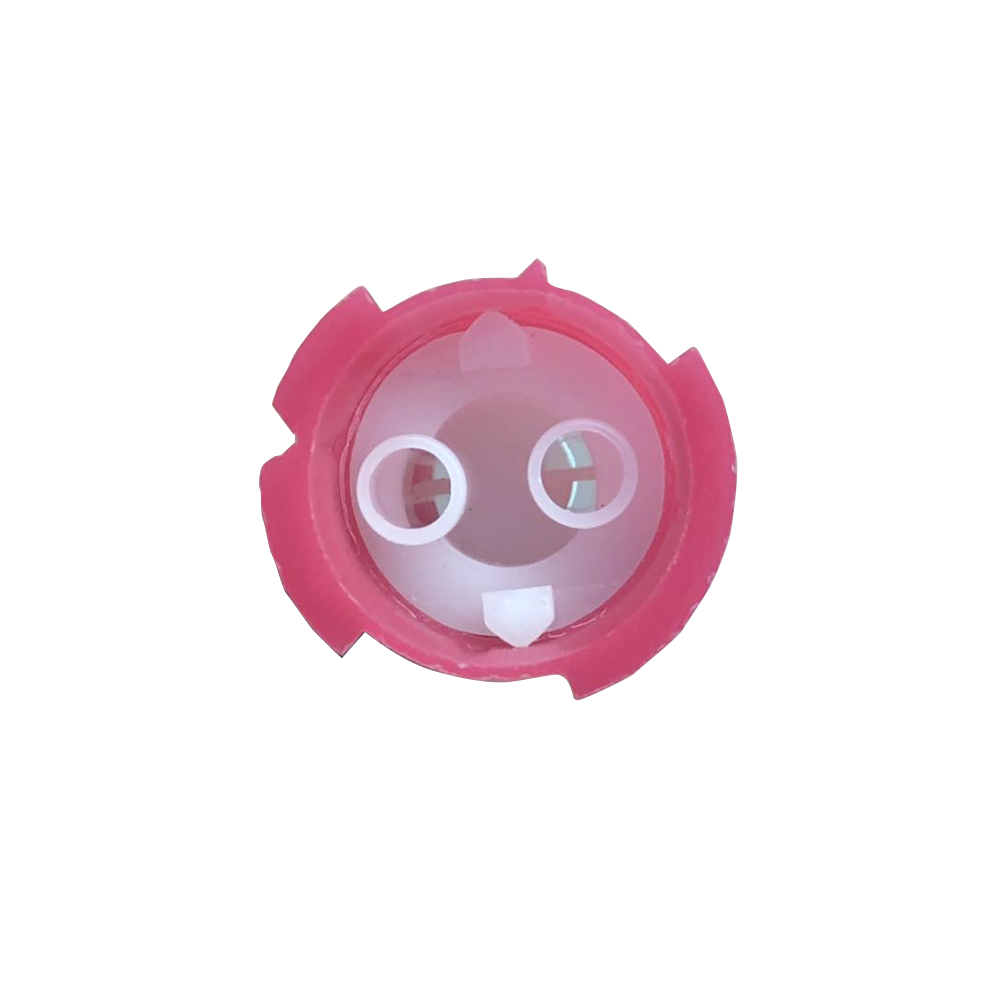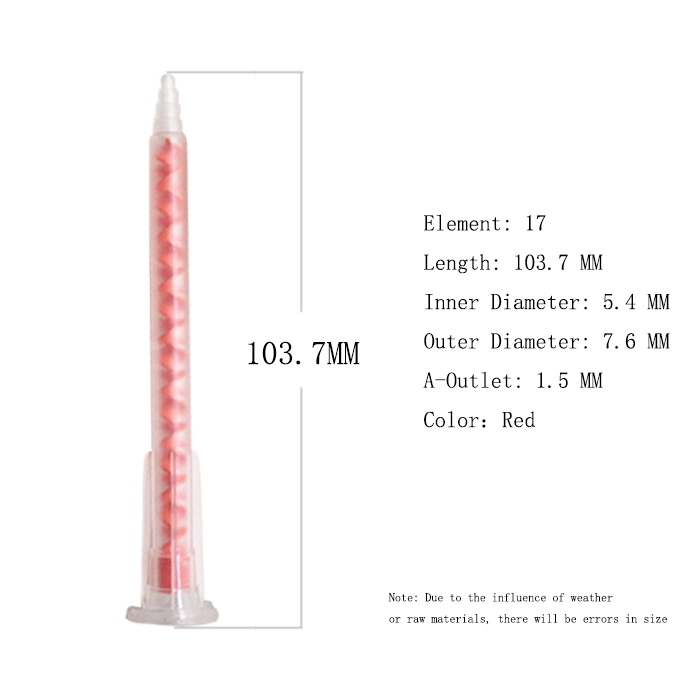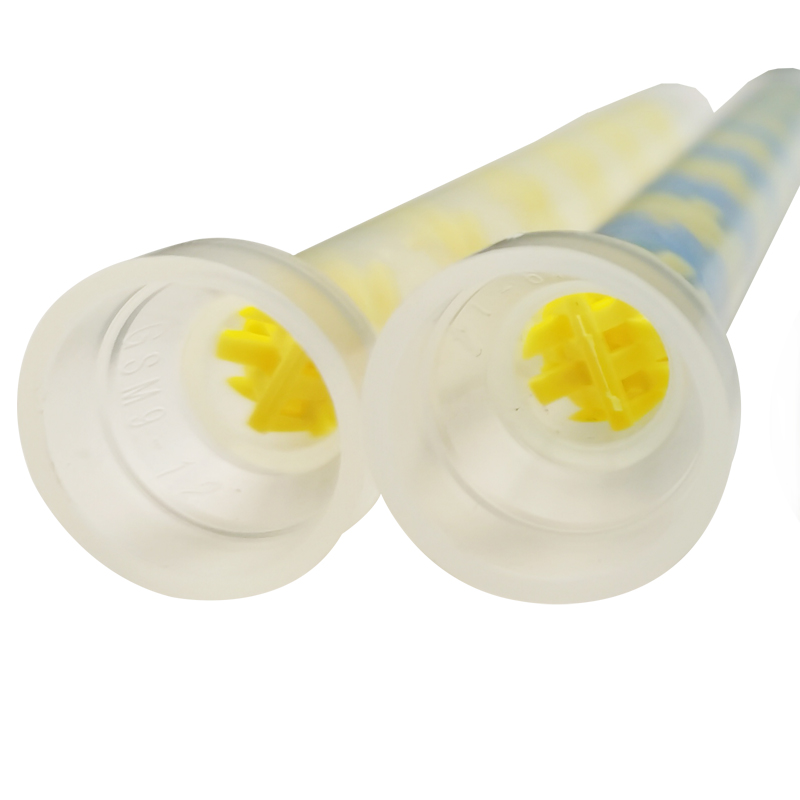Static mixing tubes have become an essential tool in a wide range of industries, from construction to manufacturing. These tubes are used to mix two or more materials, such as adhesives, sealants, or resins, before they are dispensed. The mixing process ensures that the materials are properly blended and that the resulting mixture has consistent properties.
One of the critical design features of static mixing tubes is the interface, which refers to the way in which the tube connects to the dispensing equipment. There are several reasons why static mixing tubes have different interfaces, and understanding these reasons is essential for choosing the right mixing tube for a specific application.
In this article, we will explore the reasons why static mixing tubes have different interfaces, the different types of interfaces available, and the factors to consider when choosing a mixing tube for a particular application.



Why Do Static Mixing Tubes Have Different Interfaces?
The interface of a static mixing tube is critical because it must provide a secure connection between the tube and the dispensing equipment. The interface must also allow the materials being mixed to flow through the tube and mix properly without any blockages or uneven mixing. There are several reasons why static mixing tubes have different interfaces, including the following:
-
Compatibility with Dispensing Equipment
One of the primary reasons why static mixing tubes have different interfaces is compatibility with different types of dispensing equipment. Different types of equipment require different types of connections, and mixing tubes are designed to accommodate these different requirements. For example, some dispensing equipment may require a threaded connection, while others may require a bayonet connection.
-
Accommodating Different Sizes of Cartridges
Static mixing tubes are often used with cartridges, which are pre-filled with the materials to be mixed. Cartridges come in different sizes, and mixing tubes are designed to fit different cartridge sizes. The interface of the mixing tube may be stepped to allow it to fit into a range of cartridge sizes, or it may be designed specifically for a particular cartridge size.
-
Flow Characteristics
The interface of a static mixing tube is also designed to provide the necessary flow characteristics for the materials being mixed. Different materials have different viscosities and flow characteristics, and the interface must be designed to ensure that the materials flow through the tube properly and mix evenly. The shape and size of the interface can affect the flow characteristics, which is why different interfaces are used for different types of materials.
-
Ease of Use
The interface of a static mixing tube can also affect the ease of use. Some interfaces may be easier to attach and detach from the dispensing equipment, while others may require more effort. Some interfaces may be designed to prevent leakage or dripping, while others may be more prone to these issues.
Types of Interfaces for Static Mixing Tubes
There are several types of interfaces for static mixing tubes, each with its advantages and disadvantages. Some of the most common interfaces include:
-
Threaded Connection
The threaded connection is one of the most common interfaces for static mixing tubes. This type of interface involves screwing the mixing tube onto the cartridge holder, which provides a secure connection. Threaded connections are commonly used for two-component adhesives, sealants, and coatings.
One advantage of a threaded connection is that it provides a secure connection that prevents leakage. It also allows for easy attachment and detachment of the mixing tube from the dispensing equipment. However, threaded connections may be more difficult to use with larger cartridges and may require more effort to attach and detach.
-
Bayonet Connection
The bayonet connection is another common interface for static mixing tubes. This type of interface involves snapping the mixing tube into place on the cartridge holder. Bayonet connections are commonly used for one-component adhesives and sealants.
One advantage of a bayonet connection is that it provides a secure connection that prevents leakage.
It is also easy to use, as the mixing tube can be quickly snapped into place and removed from the dispensing equipment. However, bayonet connections may not be as secure as threaded connections and may be more prone to leakage.
-
Stepped Interface
The stepped interface is designed to accommodate different cartridge sizes. This type of interface involves a series of steps that allow the mixing tube to fit into cartridges of different sizes. Stepped interfaces are commonly used for two-component adhesives, sealants, and coatings.
One advantage of a stepped interface is that it provides versatility, allowing the same mixing tube to be used with different cartridge sizes. It also allows for easy attachment and detachment of the mixing tube from the dispensing equipment. However, stepped interfaces may be more prone to leakage than threaded or bayonet connections.
-
Luer Lock Connection
The Luer lock connection is a type of interface commonly used in the medical industry. This type of interface involves twisting the mixing tube onto a Luer lock syringe, which provides a secure connection. Luer lock connections are commonly used for mixing medications and other medical applications.
One advantage of a Luer lock connection is that it provides a secure connection that prevents leakage. It also allows for precise control over the dispensing of materials. However, Luer lock connections may not be suitable for all types of materials and may require specialized equipment.
Factors to Consider When Choosing a Static Mixing Tube
When choosing a static mixing tube, it is important to consider several factors, including:
-
Material Compatibility
The first factor to consider when choosing a static mixing tube is material compatibility. The mixing tube must be designed to handle the specific materials being mixed. Different materials have different viscosities, chemical properties, and curing times, and the mixing tube must be compatible with these factors.
-
Interface Type
The interface type is another important factor to consider. The interface must be compatible with the dispensing equipment and the cartridge size. The interface must also provide the necessary flow characteristics for the materials being mixed.
-
Mixing Ratio
The mixing ratio is the ratio of the two or more materials being mixed. The mixing tube must be designed to ensure that the materials are properly mixed according to the desired ratio.
-
Dispensing Rate
The dispensing rate is the rate at which the mixed material is dispensed. The mixing tube must be designed to ensure that the material is dispensed at the desired rate.
Conclusion
In conclusion, the different interfaces of the static mixing tubes are designed to be able to accommodate various types of dispensing equipment. If you don’t know what type of interface you should choose for your static mixing tube, you can contact us and let our professionals help you pick the right static mixing tube.
